A Glace Bay man knocked on a famous photographer's door. It led him to a whole new world
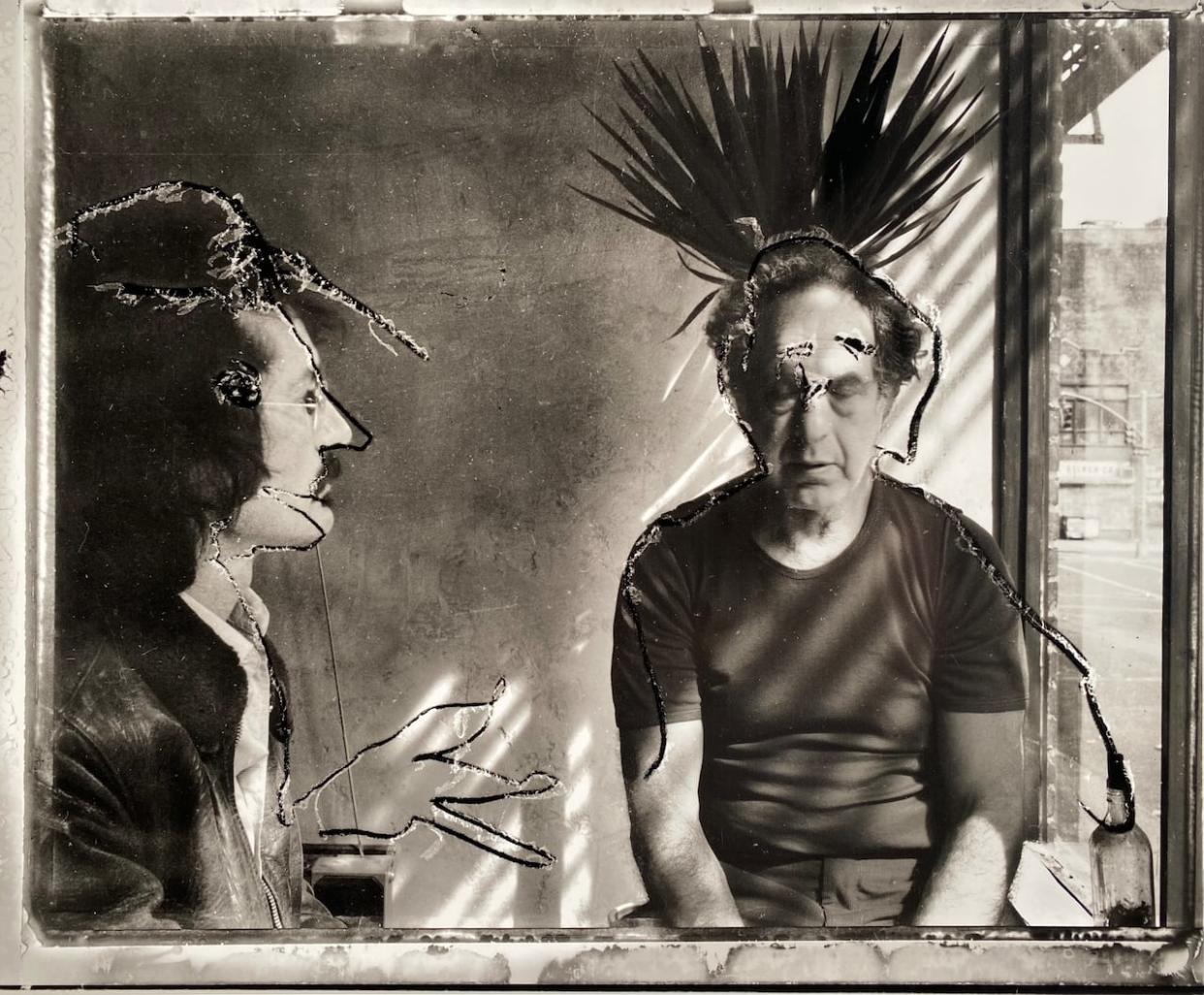
- Oops!Something went wrong.Please try again later.
When Brian Graham first learned about a world famous photographer who'd recently made Cape Breton Island his second home, he was intrigued, but he wasn't ready to meet Robert Frank just yet.
"I didn't think I had anything to say, tell you the truth," he recalled, on a recent morning from his wife's home in France. "I hadn't done anything."
His new book Goin' Down the Road with Robert Frank, documents their 40-year-long friendship and unlikely working relationship, which began in Mabou, N.S., and continued in New York City after Frank sent him a postcard inviting him to move to the city and offering him a place to stay.
For Graham, who was raised in the mining community of Glace Bay, getting swept up in Frank's world was something he could have never imagined.
"I was never going to be an artist," he said. "I mean, the best photographer I knew was my aunt."
Frank, who died in 2019 at the age of 94, was best known for his seminal book of photography, The Americans, which featured 83 photos, culled from tens of thousands, that Frank took on a 1955 road trip across the United States.
The images show a range of people just as Frank found them — whether he was documenting segregation on a city bus in the southern United States years before the dawn of the civil rights movement, or depicting other unsanitized slices of everyday life.
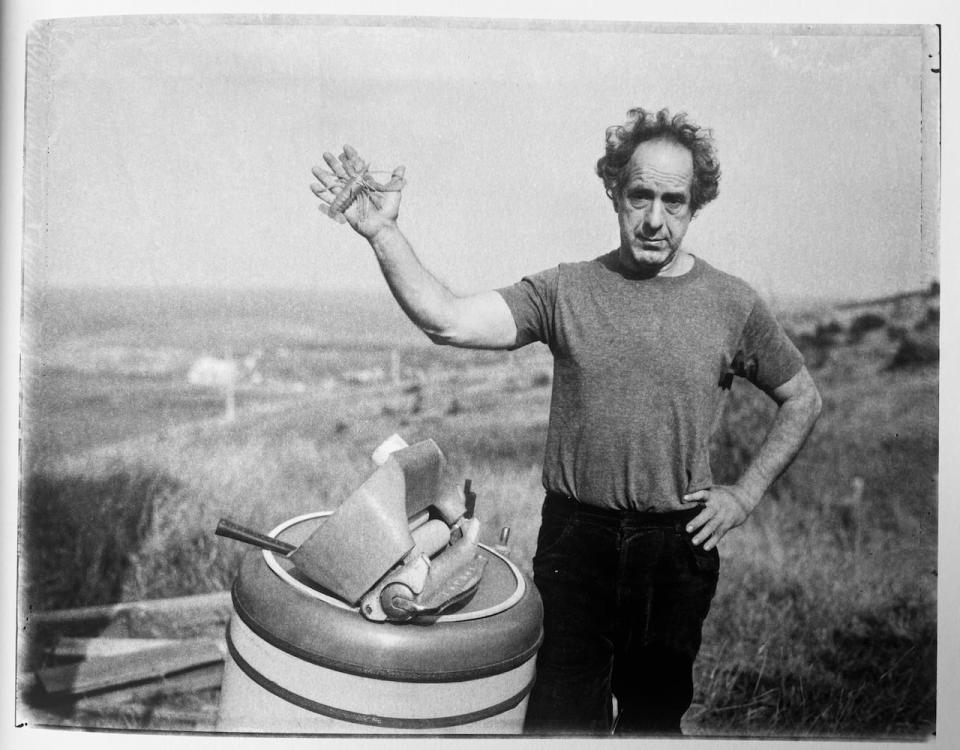
The first photo Brian Graham ever took of Robert Frank, outside the photographer's home in Mabou. (Brian Graham)
Frank first arrived in Cape Breton in the early 1970s after purchasing a ramshackle home overlooking the ocean in Mabou with his wife, the artist June Leaf. He spent winters away in New York City and summers in Nova Scotia, a place he came to adore.
"In the city, you're an operator, you're fighting to be at the top, you're afraid that the guy behind you is going to push you away and you know he will. Which is not the case here, you can be more yourself," he said in an interview with CBC News in 1977.
Graham became enamoured with photography after graduating from university in 1973 and moving to Halifax, where he began attending lectures on the subject at the Nova Scotia College of Art and Design.
But it wasn't until he spent two years working in the oilsands in Alberta and offshore near Sable Island and the Labrador Sea — gaining what he considered real life experience — that he finally worked up the nerve to knock on Frank's front door in 1979.
Wary of spooking Frank, he remembers parking far away from his house and making a slow approach on foot. The front door opened, Graham was invited inside and the two men hit it off, with Frank seeing something in Graham that would change his life.
On his next visit, Frank gave Graham a camera he had brought back from New York and told him to practise his craft by taking Polaroids.
Frank could be mercurial, and sometimes would snap at photographers taking his picture. But when they went outside and Graham pulled out his new camera to take a picture of Frank, something curious happened: he didn't swat the camera away.
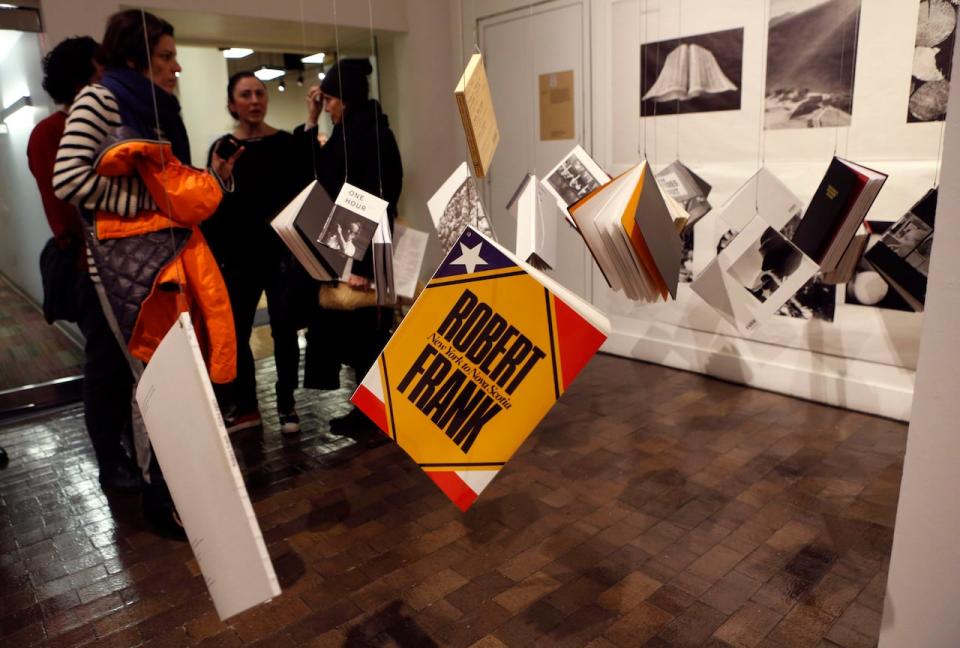
Copies of books by photographer and filmmaker Robert Frank hang from the ceiling at the opening of an exhibition featuring his work in New York City in 2016. (Kathy Willens/The Associated Press)
After moving to New York City, Graham was introduced to many of the artists in Frank's orbit. He soon found himself working for the famous beat poet Allen Ginsberg, whose photographs he printed in his new dark room (and who asked memorably after they first met, "How's the sex in Nova Scotia?") and tagging along on Frank's visits with musician Tom Waits (whose album, Rain Dogs, Frank had shot the back cover for) and filmmaker Jim Jarmusch.
"I'd go to [Ginsberg's] apartment and he'd hand me a plastic shopping bag with like 40 rolls of film in it to process and make contact sheets," he said. "I would meet all of these people, poets and different friends of Allen's, old friends and young friends … it was magic."
A masterclass in photography
For over 10 years, Graham worked closely with Frank, learning the craft from a master. That included everything from developing and printing images in the darkroom to cropping pictures for maximum impact. He even helped renovate the iconic building Frank called home on Bleecker Street on the Lower East Side.
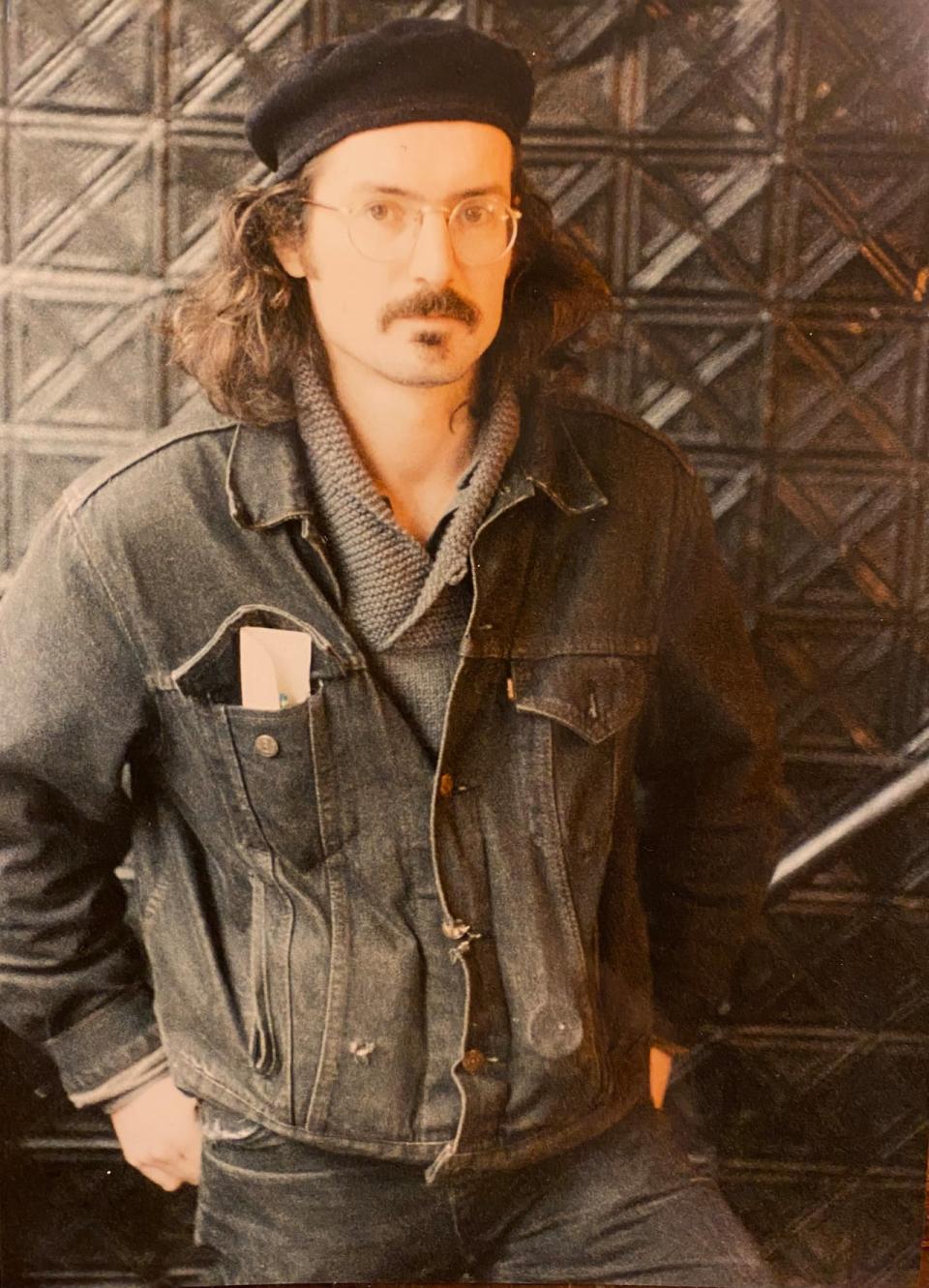
A portrait of Brian Graham taken in the mid-1980s at 7 Bleecker St. in New York. (James R Smith)
During this time he regularly captured images of Frank at work or at play, never expecting that they would amount to anything.
It wasn't until he began to sort through his archive, with the encouragement of his wife and friends, that he realized the photos he'd taken were worth sharing.
Graham's book was released earlier this year by Steidl, and features an introduction by the famous Chinese dissident artist, Ai Weiwei. They had become friends in the early '90s, when both were regular fixtures in the East Village neighbourhood of New York, where they were members of the same loosely connected scene.
"I am very happy to see Brian's photography," Ai writes in the intro. "It's like a stone sunk to the bottom of the water surfaces and brings me back to thirty years ago and all that I experienced at that time."
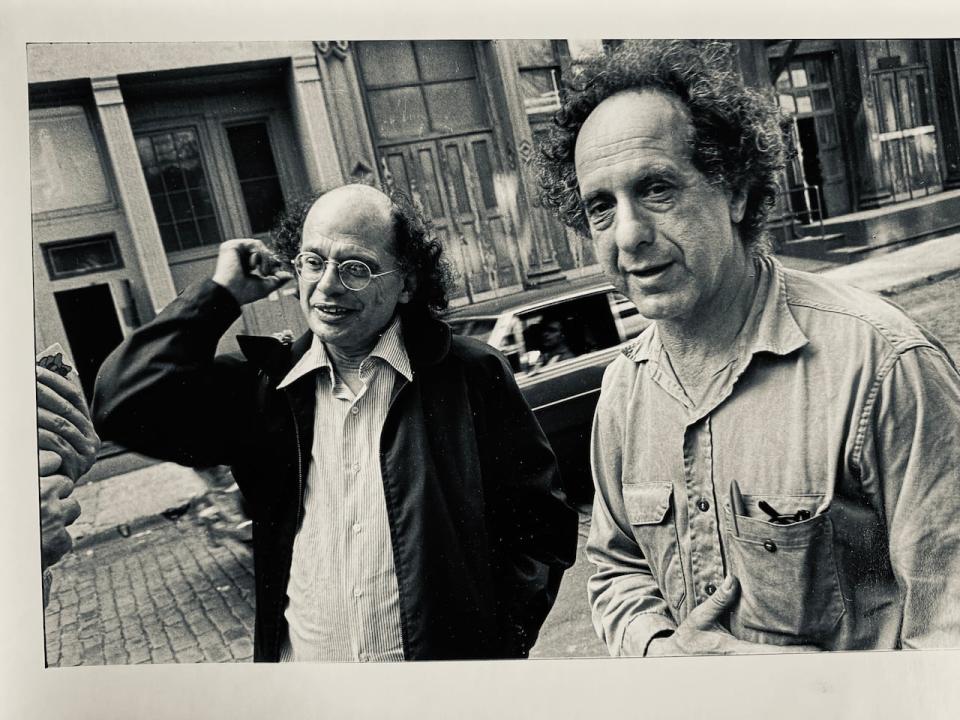
A photo of Allen Ginsberg (left) with Robert Frank following a screening of Frank’s film Energy and How to Get It in New York in 1981. (Brian Graham)
More than anything else, the book is about Graham's own journey, a memoir in images that showcases his unlikely life alongside a legendary photographer.
Looking at the photos, viewers are treated to the same peek behind the curtain that Graham enjoyed.
And if it's true that the camera doesn't lie, then Frank was clearly comfortable in his presence. Frank rarely looks contemptuous — except perhaps in one photo, a proto-selfie taken with Graham that he wasn't happy with.
Even here, however, Frank gave him something to work with.
"He didn't like it, and I guess you can see, the scratching on the negative wasn't really that friendly," Graham said.
Named after classic Cape Breton film
His book is aptly named after the 1970 Canadian cinema classic Goin' Down the Road, directed by the recently departed Donald Shebib.
That film followed two Cape Bretoners making tracks for Toronto in hopes of finding work, a journey familiar to thousands of islanders over the years, including Graham.
By the end of the movie, both characters are at their wit's end, driving away from the big city in defeat, having made a mess of their lives.
It illustrates the risk in leaving home. You might find success beyond your wildest dreams, or perhaps just as easily find yourself in ruin.
But Graham persevered. He went down the road and now he's lived long enough to tell the tale.
Over the years, he's printed work from the archives of Ginsberg, as well as from renowned photographers like Walker Evans and Rosalind Fox Solomon. He's also exhibited his own photos internationally, in New York, Berlin and Lisbon.
But after all this time, the question remains: Why did Frank send that postcard?
"I've thought of that too, because, I mean, every photographer from Brooklyn or anywhere would want to be his assistant or his printer," said Graham. "But he didn't look at it that way, you know. I think it was because I was from Glace Bay, and not many people from Glace Bay end up in New York."
MORE TOP STORIES

